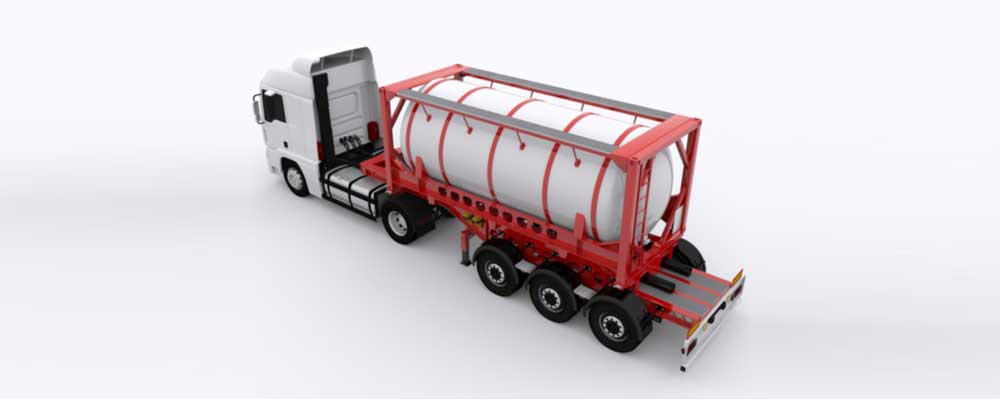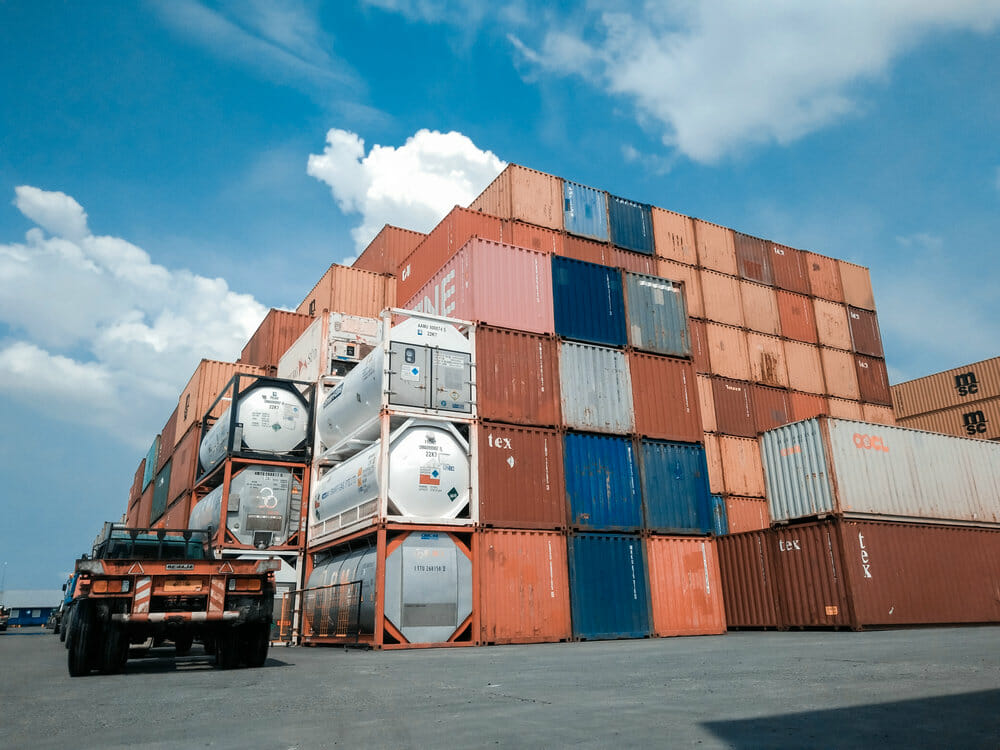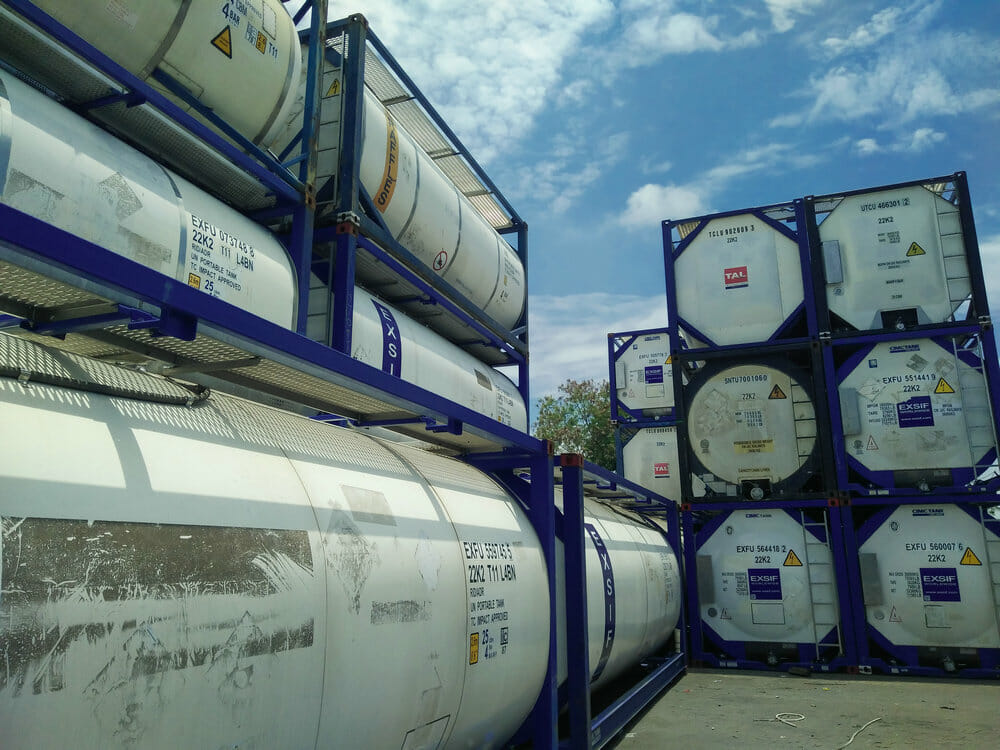
At Luckystar Logistic, we are proud to offer our clients ISO tank transport services that are tailored to their specific needs. Our ISO tank transport service provides a cost-effective, reliable, and safe solution for the transportation of a wide range of liquid cargo.
Our experienced team is well-equipped to handle the transportation of various types of liquid cargo, including chemicals, food-grade liquids, and hazardous materials. We ensure that all necessary safety protocols are strictly adhered to throughout the transportation process to ensure the safe and secure delivery of our clients’ goods.
We understand that different clients have different needs, and that’s why we offer flexible transportation options that cater to the unique needs of our clients. Our ISO tank transport service is available for both domestic and international transportation, with a comprehensive network of agents to ensure complete line service.
At Luckystar, we prioritize timely delivery, and that’s why we work tirelessly to ensure that our clients’ goods are delivered promptly, with minimal delays. Our commitment to providing high-quality, reliable, and efficient services has earned us a reputation as one of the leading ISO tank transport service providers in the industry.
With our commitment to quality, reliability, and safety, you can trust Luckystar Logistic to provide you with the best ISO tank transport services available. Contact us today to learn more about how we can help you with your ISO tank transport needs.
Table of Contents
ISO Tank Transport
Many companies provide ISO tank transport services, and the transportation cost will depend on the weight and size of the tank. The travel distance and other requested additional services can also affect the transportation cost. The ISO tanks must be properly transported to prevent tipping over or moving during transit. It’s also crucial that all safety regulations are adhered to during transport.
What Is An ISO Tank Container?
An ISO tank container is a large, unique vessel designed to transport hazardous and non-hazardous liquids and gasses in bulk. These tanks are made of stainless steel material designed to meet International standards Organization (ISO) regulations, making them safe and efficient. ISO tanks come in different sizes based on the type of gas or liquid transported.

There are two types of ISO containers used in shipping: the 20-foot and 40-foot tanks, based on ISO regulations.
How they work
ISO tanks provide an efficient, safe, and secure way to transport liquid and gases in bulk. The tanks are typically loaded onto a rail car or truck for transportation. During transit, the gas or liquids are held in a position by sets of valves and pumps for stability.
ISO tank containers have standard features, including connection mediums, locking mechanisms, mechanical frames, and size. These features are usually consistent with all ISO tank containers to ensure easy management and secure transportation from one place to another. The containers are designed with a volume capacity of around 4,000 gallons, allowing easy transportation of thousands of liters of liquids quickly.
In addition, ISO tanks that carry highly corrosive liquids or gases can last about two years, particularly those made of steel. Here are various types of liquids ISO tank containers can transport.
- Liquified sugars
- Molasses
- Vegetable oils
- Corrosive solvents and chemicals
- Hydrogen peroxide
- Alcoholic and non-alcoholic beverages
- Liquid resins
- Liquid food products
- Petroleum products, including gasoline, diesel, and liquified petroleum gas
However, the design materials of these ISO tank containers have recently been modified to suit various liquid freight types, which brings a longer useful life.
ISO Tank Structure
The ISO tank container is designed to carry all kinds of liquids, including food grade liquid and non-hazardous and hazardous liquids such as toxins, explosives, flammables, and corrosives. These containers help to eliminate any risks when transferring liquids from one vessel to the other and offer a highly secure, safe, viable, and cost-effective mode of transportation.
Once the ISO tank container has discharged the liquids, it’s thoroughly cleaned and prepared for the next load. Whereas the containers have a relatively similar outside appearance, the building materials, fittings, and linings differ.
ISO containers are categorized following the tank fittings and the shell specification. These classifications determine what the container will carry and its functions to protect the tank from misuse. With proper management, the frame is designed to handle the pressure of a fully loaded tank during the shipping process.
Parts Of An ISO Tank
The following are the parts of an ISO tank:
- Air inlet valve
- Bottom valve arrangement
- Safety relief valves
- Flame traps
- Cladding frames
- Data/CSC plates
- Heating system
- Manlid
- Tank number
- Walkway
- Earth/ground lug
- Walkway
- Temperature gauge
Advantages of ISO tanks
There are reasons why ISO tank containers are popular for bulk liquid transportation. Here are some advantages of ISO tanks.

Cost-effective
ISO tanks are one of the most economical option for the two-way shipping business. Their uniform design makes it easy to move them from a sea vessel to the rail or trucks using the relevant loading equipment. It substantially alleviates handling and storage costs by as high as 30%.
Safety
The standards established by ISO ensure that the tank is safe and guarantees the containment of the liquid transported. Liquid freight or shipments can be transported safely, no matter how hazardous. The tanks are also designed to maintain specific temperature levels that suit sensitive liquid freight.
Efficiency
ISO tanks are mainly designed to eliminate the likelihood of spillage, save fuel, and reduce the emission of carbon dioxide into the surrounding environment. They are also durable and can be used continuously with fewer inspections. Additionally, they are made of steel or aluminium, enabling them to withstand temperature fluctuations and handle considerable pressure.
ISO tanks vs. drums
In many places worldwide, liquids are transported in drums and shipped using standard box containers. However, more shipping companies prefer transporting bulk liquid cargo using ISO tanks and flexitanks.
This is because ISO tanks are safer to transport with less risk of damage and spillage. Additionally, ISO tank containers can typically be loaded and unloaded for about one and a half hours, while drums can take up to eight hours.
ISO tanks are the most preferred mode of transporting bulk liquids for their many safety advantages, ability to be used repeatedly, intermodalism, and versatility they bring to the transporters.
Isotanks vs. flexitanks
Flexitank is a bag or bladder that can fit into an ISO-standard container and is utilized to transport or store non-regulated liquid cargo inside a freight transport vessel. Like ISO tanks, flexitanks are also used to transport bulk liquids.
However, bulk liquid transportation is an extensive element of shipping. Therefore, considering the origin and type of the liquid and the cargo’s destination will determine which element would be cost-effective and efficient.
Both flexitanks and ISO tanks have distinct differences that make them ideal for specific processes. Flexitanks are a more practical alternative for non-hazardous liquids depending on the origin and final destination of the freight.
One of the usual shipping processes involves repositioning, which refers to moving an empty container from a palace with many containers to an area with a shortage. Due to this price increase, transporters prefer using flexitanks instead of ISO tank containers for transporting non-hazardous liquid cargo.
ISO Tank Service
Typical ISO tank services include the following:
Fleet management
Shipping companies can offer fleet management services for people that own tanks but require logistics operator specialists to handle them by providing the safest route, maintenance and cost-effective solutions.
Transloading and Storage
Shipping companies usually offer complementary services to tank container shipping to cover the entire logistics of bulk liquid freight, such as storage facilities and transloading.
Tank rental for storage
Shipping companies offer tank containers for stationary storage as an interim solution for customers with storage limitations. This service allows you to enjoy the advantages of the tank container transportation system if you need bulk storage facilities.
Tank container refurbishment
Some shipping companies also offer full ISO tank fill refurbishments such as major repairs, maintenance, and specialized cleaning.
ISO tank specifications
An ISO tank is a cylindrical designed vessel, surrounded by the overall international standard dimensions of a container which is a 20′ x 8′ x 8.5′ framework for hazardous and non-hazardous liquid bulk transportation.
ISO tank safety features
The safety features of an ISO tank include the following:
- Efficient cargo handling: With ISO, the loading and unloading process is fast and safe.
- Cargo protection: ISO tanks are strong storage vessels for chemicals. A stainless steel shell ensures that the liquid cargo reaches the intended destination safely and uncontaminated.
- Environment: ISO tanks have a minimal carbon footprint. The tank does not emit any carbon dioxide or harmful toxins into the environment.
The tank is also leak and explosion-proof and equipped with emergency release valves that can be switched remotely to vent the tank during an emergency.
Disadvantages of ISO tanks
ISO tank containers ship different liquids with various chemical compounds and temperatures. These liquids react differently in specific conditions. For example, high-temperature liquids can solidify in the tank if the high degrees are not maintained.
This is a regular incident, and ISO tanks are designed so that they can be heated to melt the liquid inside before discharging the fluids. Alternatively, the solidified liquid can be removed from the tank using pressurized air. However, while these efficients ways of draining high-temperature liquids, they can substantially stress the tank and result in cracks and leaks.
Additionally, if the coatings break during maintenance or repair procedures, ISO tanks can be damaged. When the protective layer is tampered with, the exposed areas become more vulnerable to cracks. But the tampered protective layers can be repaired to restore the tank’s soundness.
How are ISO tanks transported?
ISO tanks are typically transported by a rail car or truck. The tank must be safely secured, and the safety regulations must be adhered to. The rail car or truck must be able to support the tank’s weight and the liquid cargo.

What is ISO Drayage?
ISO drayage refers to transporting a tank from one place to the other by truck. The transportation cost will depend on the weight and size of the tank and the transportation distance.
How do you load an ISO tank?
Loading an ISO tank involves linking the tank to a loading and unloading system such as a hose or pump. The tank is then filled with the required liquid or gas freight, and the pumps and valves are used to control the flow of the contents and maintain the pressure in the tank.
What does ISO stand for in tanks?
ISO tanks are built to meet international standards organization (ISO) regulations. They are generally used in international shipping to transport bulk liquids between countries.
Conclusion
ISO tanks are containers designed to transport hazardous and non-hazardous liquids or gases. They are typically built of a sturdy steel frame and are designed to meet international safety and environmental safety regulations. Moreover, ISO tanks are much cheaper than other modes of bulk liquid freight and can be used for a wide array of liquids.
